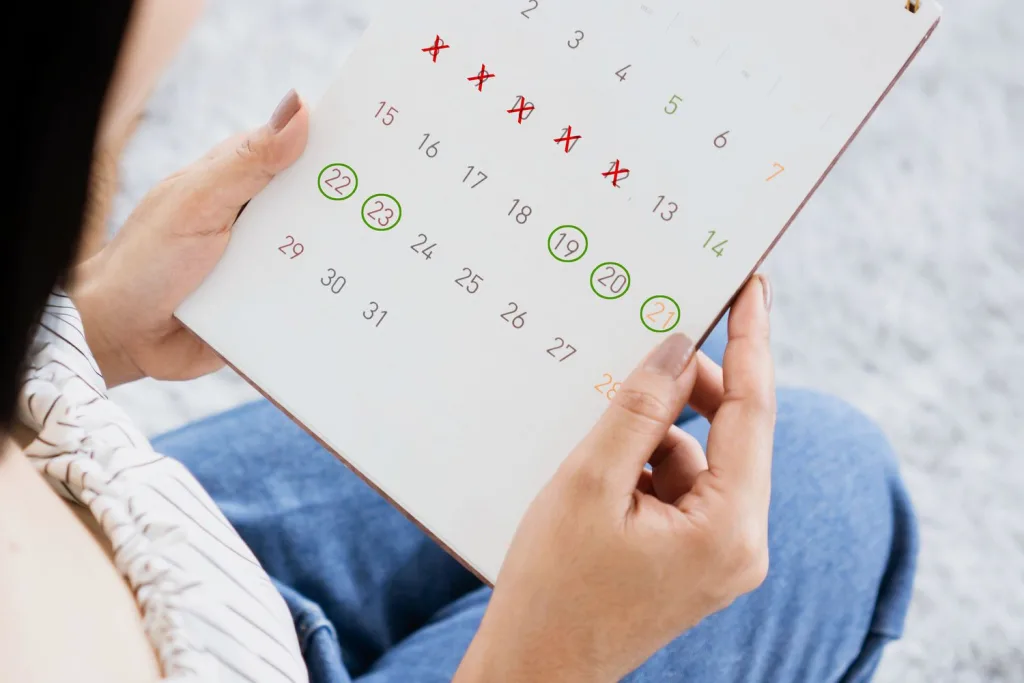Ovulation is a critical phase in the menstrual cycle, marking the release of an egg from one of the ovaries. For those trying to conceive or manage their reproductive health, understanding how to calculate ovulation can be invaluable. This guide will walk you through the various methods and tools to accurately determine your ovulation period.
The Menstrual Cycle
Before diving into the methods of calculating ovulation, it’s important to understand the basics of the menstrual cycle. A typical menstrual cycle lasts between 21 and 35 days, with an average cycle being about 28 days. The cycle can be divided into three main phases:
- Follicular Phase: This phase starts on the first day of your period and lasts until ovulation. During this time, follicles in the ovary mature.
- Ovulation: This is the release of a mature egg from the ovary, typically occurring mid-cycle.
- Luteal Phase: Post-ovulation, this phase lasts until the start of your next period.
Calculating Ovulation: Methods and Tools
- Calendar Method
- How it Works: Track your menstrual cycles for several months to determine the average length of your cycle. Ovulation usually occurs about 14 days before your next period.
- Steps:
- Record the first day of your period (Day 1).
- Count the total number of days in your cycle.
- Subtract 14 days from the end of your cycle to estimate your ovulation day.
- Example: If your cycle is 28 days long, you are likely to ovulate around Day 14.
- Basal Body Temperature (BBT)
- How it Works: Measure your body temperature every morning before getting out of bed. A slight increase (about 0.5 to 1 degree Fahrenheit) indicates ovulation.

- Steps:
- Use a basal body thermometer to take your temperature at the same time every morning.
- Record the temperatures daily.
- Look for a consistent rise in temperature, which typically signifies ovulation has occurred.
- Tips: It may take a few cycles to recognize the pattern.
- Cervical Mucus Method
- How it Works: Monitor the changes in your cervical mucus throughout your cycle. Mucus becomes clearer, stretchier, and more slippery around ovulation, resembling raw egg whites.
- Steps:
- Check your cervical mucus daily by wiping with toilet paper before urinating or by inserting a clean finger into the vagina.
- Note the texture, color, and consistency of the mucus.
- Identify the days when the mucus is most stretchy and slippery—this is when ovulation is likely occurring.
- Ovulation Predictor Kits (OPKs)
- How it Works: OPKs detect the surge in luteinizing hormone (LH) that precedes ovulation.
- Steps:
- Start testing your urine a few days before your expected ovulation.
- Follow the instructions on the kit, typically involving dipping a test strip in urine or using a digital reader.
- A positive result indicates an LH surge, suggesting ovulation will occur within the next 24-36 hours.
- Pros: Provides a more precise window for ovulation compared to other methods.
- Fertility Apps and Tracking Devices
- How it Works: Use digital tools to log your menstrual cycle details, BBT, cervical mucus observations, and other relevant data. Many apps use algorithms to predict ovulation.
- Steps:
- Download a reputable fertility tracking app.
- Input your cycle details and daily observations.
- Follow the app’s predictions and recommendations for ovulation.
- Examples: Apps like Clue, Glow, and Ovia are popular options.
Combining Methods for Accuracy
For the most accurate results, consider combining several of these methods. For instance, you might use the calendar method alongside tracking your BBT and monitoring cervical mucus. This multi-faceted approach increases the likelihood of accurately predicting ovulation.
When to Seek Professional Advice
If you’re struggling to determine your ovulation or if you’re trying to conceive for a year (or six months if you’re over 35) without success, it may be time to consult a healthcare professional. They can provide more personalized advice and conduct tests to ensure everything is functioning as it should be.
Conclusion
Calculating ovulation involves understanding your menstrual cycle and observing bodily signs and changes. Whether you use simple calendar tracking, physical observations, or advanced digital tools, knowing when you ovulate can significantly impact your reproductive planning. With patience and consistent tracking, you can gain a clearer picture of your ovulation patterns.
